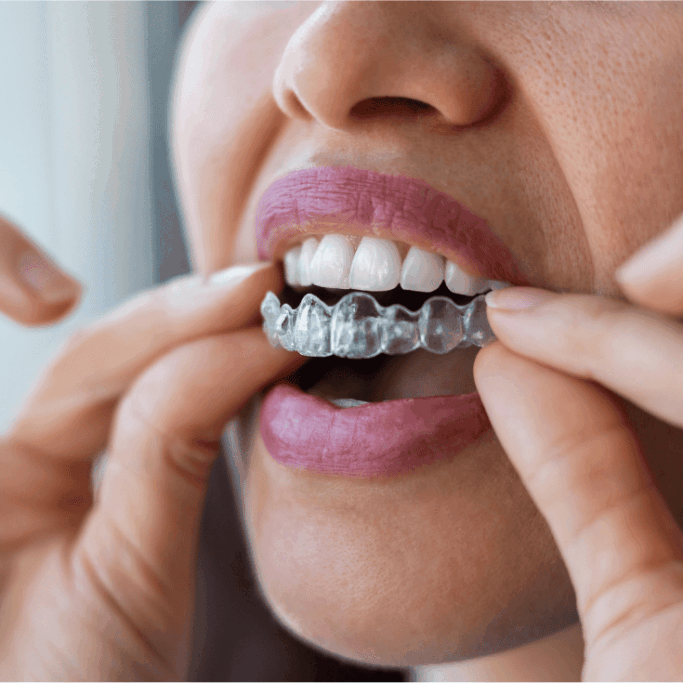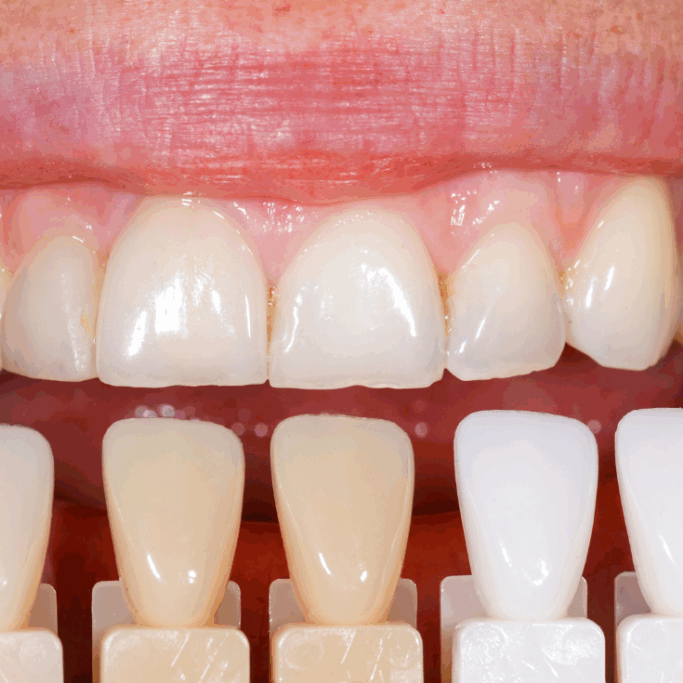How Coffee, Wine, and Soda Affect Your Smile (and How Whitening Can Help)

The Everyday Drinks That Leave a Mark
The ritual is simple, familiar, and ingrained in our daily lives: that first invigorating sip of coffee in the morning, the relaxing clink of a wine glass after a long day, or the sweet, effervescent fizz of an afternoon soda. These beverages, which bring so much comfort and enjoyment, are often the very ones quietly leaving their mark on your teeth.
While you may not notice a dramatic change overnight, frequent exposure to these beloved drinks makes them the biggest culprits behind gradual tooth discoloration. This isn’t just a cosmetic issue; it can make your teeth look older, duller, and ultimately impact your confidence.
The good news? You don’t have to give up your favorite drinks. The purpose of this article is to pull back the curtain on how common beverages stain your teeth, what’s happening at the microscopic level, and how modern, professional whitening treatments can safely and effectively restore your smile’s natural, radiant brightness.
Why Teeth Stain: The Science Behind Discoloration
To understand staining, you have to understand the surface of your teeth. The outermost layer, enamel, is incredibly strong; it’s the hardest substance in the human body. Yet, it is also highly porous, covered in microscopic ridges and valleys that, over time, act like a sponge, allowing pigments from food and drink to settle in.
We categorize staining into two types:
- Extrinsic Stains: These are surface stains caused by pigmented compounds, primarily found in dark foods and beverages. Key culprits are tannins and chromogens, which chemically bond to the enamel surface.
- Intrinsic Stains: These are deeper discolorations that occur from within the tooth structure, often caused by genetics, trauma, certain medications, or significant enamel thinning.
A major accelerator for both types of staining is acid. Drinks high in citric, phosphoric, or tartaric acid erode the enamel, essentially softening the protective layer and widening those microscopic pores. This makes it significantly easier for staining compounds to penetrate and set deeper into the tooth structure.
Even with diligent daily brushing, frequent, prolonged exposure to dark or acidic drinks can gradually change the color and translucency of your enamel, giving your smile a dull, yellowish cast over time.
Coffee: The Morning Ritual That Stains Slowly
It’s no surprise that coffee is one of the most common causes of staining worldwide. The reason is two-fold: it contains high levels of dark chromogens and is quite acidic.
The real problem lies in the frequency of consumption. Many people sip coffee throughout the day, which keeps their enamel consistently exposed to staining compounds. Every time you take a sip, you are essentially refreshing the bath of pigment and acid on your teeth.
- Black coffee stains more directly due to the concentration of dark pigments.
- While adding milk or cream may lighten the overall liquid, the acidity remains, and added sugar can fuel cavity-causing bacteria.
Simple Prevention Tips for Coffee Lovers
The goal isn’t to quit, but to manage exposure:
- Rinse with Water: After finishing your coffee, swish a mouthful of plain water to neutralize acids and wash away surface pigments.
- Use a Straw: For iced coffee, a straw can help bypass the front surfaces of your teeth.
- Wait to Brush: Because coffee’s acidity softens enamel, brushing immediately can actually cause micro-abrasion. Wait at least 30 minutes after drinking coffee before you brush your teeth.
While these habits can slow the process, professional whitening is the only way to safely and effectively remove the stains that have built up over the years without damaging your enamel.
Red Wine: Elegant but Erosive
Red wine is a foe to a white smile, creating a “triple threat” for enamel staining:
- Rich Pigments: Deep purple and red chromogens readily cling to the enamel.
- Acids: The natural acidity in wine weakens the enamel surface.
- Tannins: These compounds, which give wine its dry texture, act as sticky magnets, helping the pigments chemically bind and adhere to the tooth surface almost instantly, creating the well-known phenomenon of “wine teeth.”
Even white wine contributes indirectly to staining. While it lacks the dark pigments, its high acidity is often enough to soften and weaken the enamel, making your teeth more susceptible to staining from your dinner, dessert, or other beverages you consume later.
Prevention Tips for Wine Connoisseurs
Alternate Sips with Water: Keep a glass of water nearby and swish periodically to rinse acids and pigments.
Brush and Floss 30 Minutes Before: By brushing and flossing before you drink wine, you remove plaque, which is rough and allows pigments to stick more easily. Less plaque equals less staining. But you have to brush 30 minutes prior to allow the protective Pellicle to rebuild before wine exposure.
Consider Touch-Ups: For those who enjoy wine frequently, professional whitening touch-ups after events or vacations can maintain your desired brightness.
Soda and Sparkling Beverages: Sugar, Acid, and Color
The effect of soda and sparkling beverages extends far beyond just dark sodas like cola or root beer. Even clear sparkling drinks and flavored waters can be surprisingly damaging.
The fundamental issue is the combination of phosphoric acid (a key ingredient in most sodas) and sugar (or artificial sweeteners that are often acidic).
- Erosion: The acid begins to erode the enamel, thinning the strong outer layer.
- Discoloration: Over time, this thinning reveals the naturally yellowish layer of dentin beneath, giving the teeth a dull, yellowish, and darker tint, even if the soda itself wasn’t dark.
- Sugar-Free is Still Acidic: Do not be fooled; most sugar-free and diet sodas are still highly acidic and contribute to micro-erosion.
Once enamel is significantly worn down, whitening can help restore brightness, but it cannot rebuild the enamel, which is why prevention is critical.
Prevention Tips for Carbonated Drinks
- Limit to Mealtimes: Sipping throughout the day is the worst habit. Limit consumption to one period, such as a meal.
- Rinse with Water: Again, swishing with water is a simple and effective way to neutralize the acid attack.
- Avoid Immediate Brushing: Just as with coffee, wait at least 30 minutes after consuming soda before brushing.
Daily Habits That Help Prevent Staining
Maintaining a bright smile requires a consistent commitment to simple, dentist-approved habits:
- Brush Twice Daily: Use a quality toothpaste, preferably one with gentle polishing agents, and an electric toothbrush for more consistent, effective cleaning.
- Floss Daily: Flossing removes plaque where pigments love to stick, preventing stains from setting in between teeth.
- Drink Water Frequently: Water is your smile’s best friend. It helps neutralize acids and constantly washes away loose pigments.
- Schedule Regular Professional Cleanings: Your dental hygienist uses specialized tools to remove tough surface stains that brushing alone cannot touch.
How Professional Whitening Works
For stains that have set deep into the porous enamel structure, over-the-counter strips or toothpastes simply won’t cut it. Professional whitening treatments go beyond surface-level cleaning by utilizing clinically tested, high-concentration hydrogen peroxide or carbamide peroxide gels.
These powerful gels work at the molecular level by penetrating the enamel and dentin to break down the carbon-based bonds of the deeply set staining molecules. This process, called oxidation, chemically lifts and neutralizes the color molecules, restoring the tooth’s natural white appearance.
At Comfy Dental Studios, we offer two primary professional options:
- In-Office Whitening: An accelerated, single-visit treatment that provides dramatic, immediate results under direct supervision.
- Custom Take-Home Trays: Professional-grade gel and custom-fitted trays allow for gradual brightening on your own schedule with flexible, touch-up use.
Professional supervision ensures safe, even results, minimal sensitivity, and the protection of gum tissue. We use advanced whitening systems designed for maximum comfort and a beautiful, natural-looking brightness that maintains your enamel integrity.
Also Read: Professional Teeth Whitening in Beverly Hills: What to Expect
When Whitening Alone Isn’t Enough
While professional whitening is highly effective for extrinsic stains, some discoloration may be due to internal factors such as medication use, prior dental trauma, or severe enamel wear. In these specific cases, a darker color might not respond fully to peroxide gels.
For patients with intrinsic or extremely stubborn discoloration, cosmetic treatments like porcelain veneers or dental bonding may offer a more permanent and better aesthetic result than whitening alone.
We encourage every patient to schedule a consultation to determine the cause of discoloration and find the safest, most effective cosmetic approach for their individual needs. Regardless of the cause, personalized solutions are available to restore your smile’s brightness and boost your confidence.
Also Read: Veneers vs. Teeth Whitening: What’s Better for Long-Term Results?
Conclusion: Brighten Your Smile, Protect Your Confidence
You don’t have to choose between enjoying your morning coffee, a celebratory glass of wine, or an occasional soda and having a dazzling smile.
Modern dentistry offers safe, effective, and predictable whitening options that can reverse the staining effects of your favorite beverages while preserving the health of your enamel.
At Comfy Dental Studios, we believe a radiant smile should be effortless, and with professional guidance and regular care, it absolutely can be.




